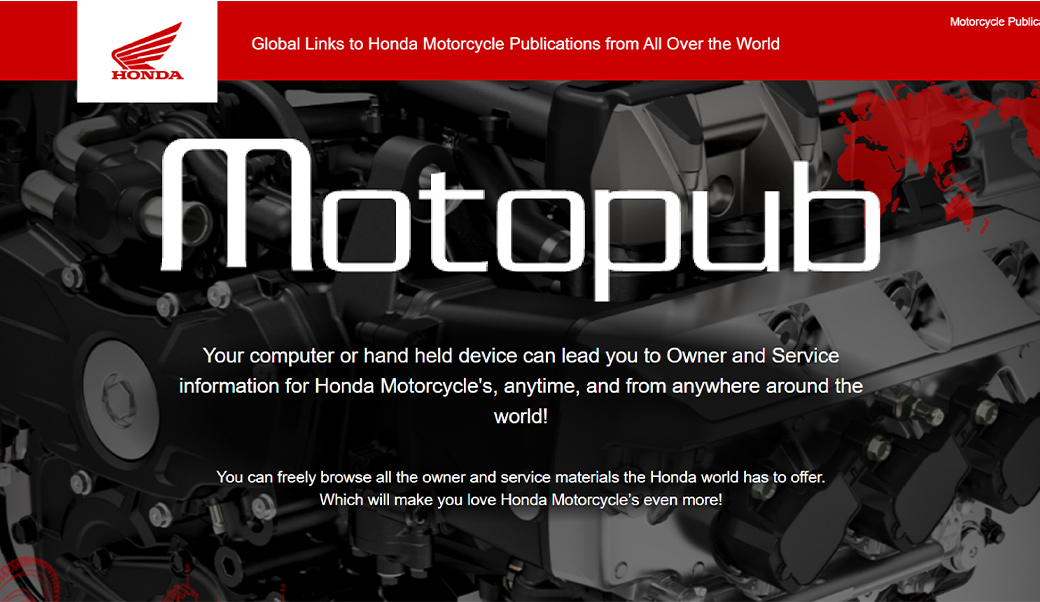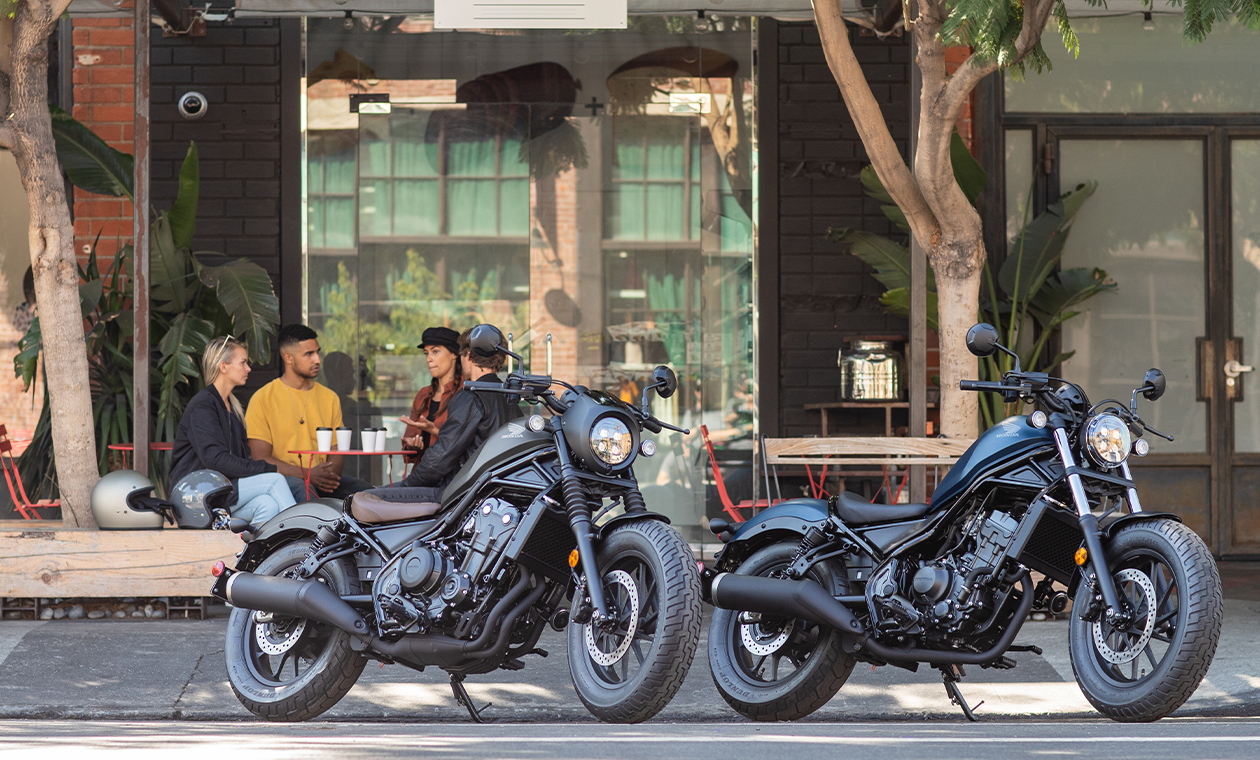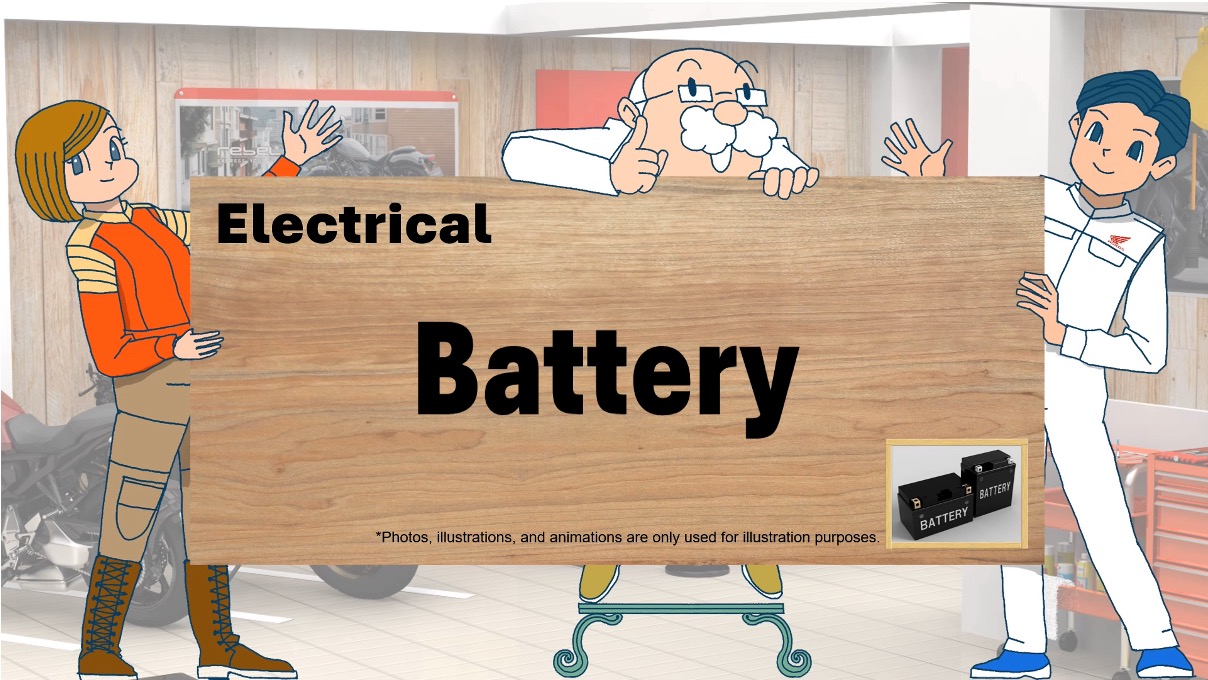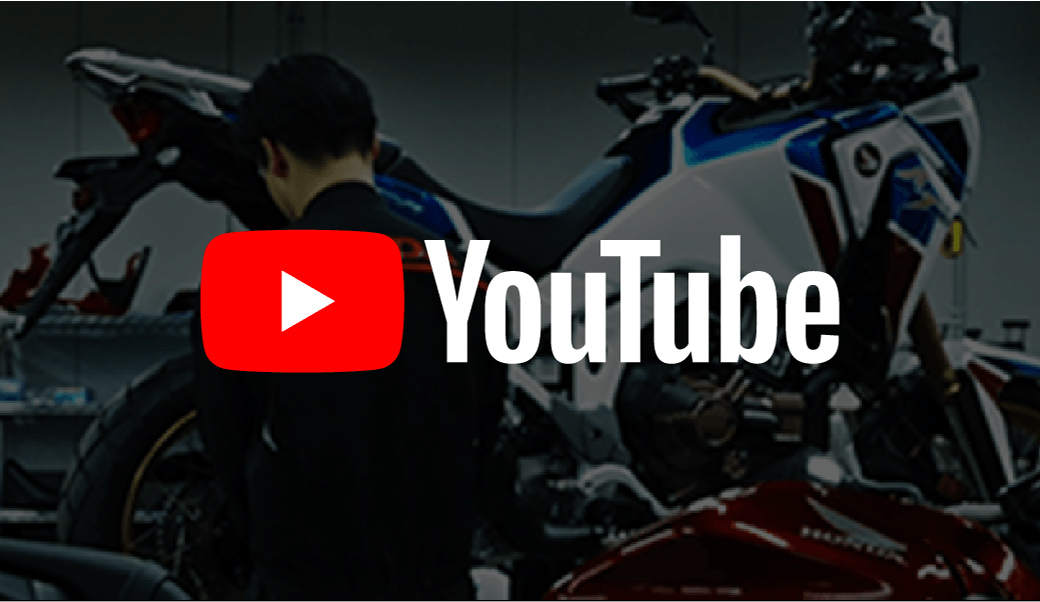Don't be in a hurry!
There may be a case where the engine does not start all of sudden even though it had been running just fine.
You may be able to cope with it all too easily if you know what to first look at.
Here are some check items and troubleshooting when the engine does not start.
Index
1.Start Your Engine Using Correct Procedures!
When your engine does not start, the steps you follow might not be in accordance with the correct engine starting sequence.
If you are a Honda rider, access Motopub below for the Owner’s Manual of your vehicle.
If your motorcycle is of other manufacture, follow their instructions.
With peace of mind, try to start the engine by following the steps shown in the Owner’s Manual.
2.Items to be Checked Once Again
If the engine still does not start, it might be because of a simple careless mistake as is often the case.
Check the following items once again and, with peace of mind, follow the steps again to start the engine.
For other check items, refer to the Owner’s Manual.
Does any indicator come on when you turn the ignition switch to the ON position?
Yes ⇒ Go to 2.1
No ⇒ Go to 2.2


2.1 When the Indicator Comes On
Checking the items starting from ① may solve a problem smoothly.
① Is there Gasoline in the Fuel Tank?

Obviously, the engine does not start without gasoline.
Check a fuel meter if your motorcycle has.
For models with no fuel meter, open the tank and visually look inside using a flashlight.
Since gasoline may be trapped in an invisible area of the tank, try swinging the vehicle lightly. You will hear a sloshing sound when gasoline remains even in a small amount.
② Is the Engine Stop Switch (Kill Switch) on the RUN position?
RUN position?

The engine stop switch (kill switch), which forces the engine to stop in case of emergency, is located on the right handle in many motorcycles.
There is a possibility that you have inadvertently touched the switch and turned it off.
* With the engine stop switch (kill switch) on the OFF position, the starter motor generally does not operate, but it does in some models. Keeping the starter motor running can cause battery rundown.
Check, the engine stop switch first and foremost when the engine does not start.
③ Is the transmission in Neutral?

In some models, the engine may not start with the transmission in gear.
Make sure that it is in Neutral before trying to start the engine.
④ Is the Side Stand Raised?

In some models, the engine may not start with the side stand not raised.
There are cases in which the side stand is not fully raised due to the dirt or rust on its joint.
Check to see that the side stand is fully raised before trying to start the engine.
⑤ Do you Pull in the Brake Lever or the Clutch Lever?

Even when the side stand is raised, the engine does not start with the transmission not in Neutral unless you pull in the clutch lever. In some models, you need to pull in the brake lever too, otherwise the engine will not start.
As the safety feature to prevent an erroneous start is in place, in starting the engine, make sure to shift the transmission to Neutral whenever possible.
⑥ Is PGM-FI MIL (Check Engine Light / Engine Warning Light) On?
- Only for Fuel Injected motorcycles

If the PGM-FI Malfunction Indicator Lamp (MIL) (Check Engine Light / Engine Warning Light) remains On a few seconds after turning the ignition switch ON, you may have some kind of problem.
Even when the engine starts, do not ride your motorcycle at a high speed, but have it inspected by a Honda dealer as soon as possible.
⑦ Is the Fuel Valve in the ON position?
- Only for Carbureted motorcycles

There is a fuel valve to let fuel flow from the fuel tank to the carburetor.
With the valve on the OFF position, fuel does not flow, leading to an out-of-gas condition even though there is gasoline in the tank. Make sure that the valve is on the ON position.
If you find yourself out of gas with the fuel valve on the ON position, try switching the valve to the RES (Reserve) position.
Models without a fuel meter usually have a mechanism to hold reserve fuel. It allows you to run your motorcycle by switching the valve to the Res when fuel is not supplied with the valve on the ON position.
When switching it to the RES, wait for fuel to reach the carburetor before starting the engine.
Make a point of refueling the tank in good time as the amount of reserve fuel is small.
⑧ Is the Choke Lever Pulled?
- Only for Carbureted motorcycles

By pulling the lever, rich air/fuel mixture are supplied to the engine, improving its ability to start up.
When the engine is cold, it will take time in starting to run. If this is the case, try pulling the choke lever.
The position of the choke lever differs from model to model. If you do not know where it is, refer to the Owner’s Manual.
⑨ Does the Starter Motor operate?

If you have checked all the items ①-⑧ only to see your engine not start and hear a weak sound from the starter motor, the battery might be weakened.
Likewise, in models with a kickstarter, the battery might be weakened when you are able to start the engine with the kickstarter despite a weaker-than-usual sound from the starter motor activated with the starter button.
Recharge your battery using a charger for motorcycles or have it inspected by a Honda dealer.
2.2 When the Indicator Does Not Come On

Even with the ignition switch ON, if the display and the meter do not operate, complete battery exhaustion or an electric system failure is possible.
Since it is not easy to identify a cause, consult with a Honda dealer and have them inspect/repair your motorcycle.
3.When Not Sure What is Wrong and How to Cope
If you try to start the engine over and over or remove some part(s), things may get worse, causing more damage.
Bring your motorcycle to a reliable dealer for inspection/repair without trying to solve a problem on your own. By doing so, you may save time and money at the end of the day.
4.In order to Prevent Troubles
When was the last time you had maintenance for your motorcycle?
Periodic maintenance helps keep troubles at bay.
Motorcycles have numerous consumable parts, some of which are not visible on exterior.
We hope you stay on top of scheduled maintenance and keep your motorcycle in good condition!
Enjoy your life with safe riding!

Does your motorcycle get periodic maintenance?




